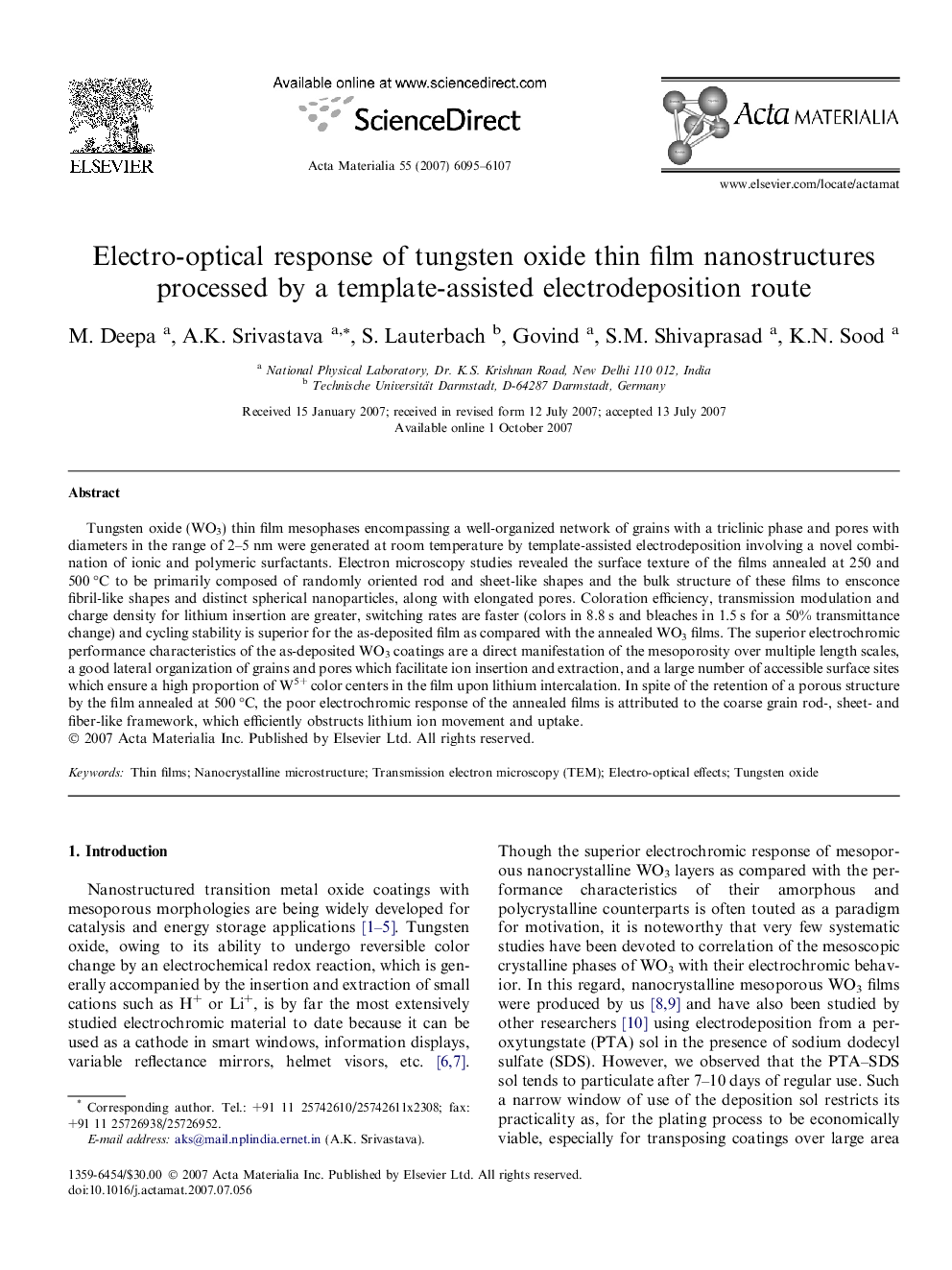| Article ID | Journal | Published Year | Pages | File Type |
|---|---|---|---|---|
| 1449416 | Acta Materialia | 2007 | 13 Pages |
Tungsten oxide (WO3) thin film mesophases encompassing a well-organized network of grains with a triclinic phase and pores with diameters in the range of 2–5 nm were generated at room temperature by template-assisted electrodeposition involving a novel combination of ionic and polymeric surfactants. Electron microscopy studies revealed the surface texture of the films annealed at 250 and 500 °C to be primarily composed of randomly oriented rod and sheet-like shapes and the bulk structure of these films to ensconce fibril-like shapes and distinct spherical nanoparticles, along with elongated pores. Coloration efficiency, transmission modulation and charge density for lithium insertion are greater, switching rates are faster (colors in 8.8 s and bleaches in 1.5 s for a 50% transmittance change) and cycling stability is superior for the as-deposited film as compared with the annealed WO3 films. The superior electrochromic performance characteristics of the as-deposited WO3 coatings are a direct manifestation of the mesoporosity over multiple length scales, a good lateral organization of grains and pores which facilitate ion insertion and extraction, and a large number of accessible surface sites which ensure a high proportion of W5+ color centers in the film upon lithium intercalation. In spite of the retention of a porous structure by the film annealed at 500 °C, the poor electrochromic response of the annealed films is attributed to the coarse grain rod-, sheet- and fiber-like framework, which efficiently obstructs lithium ion movement and uptake.
